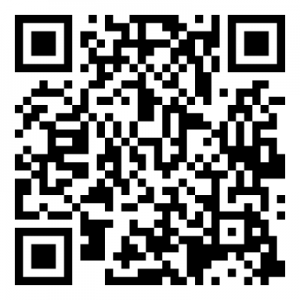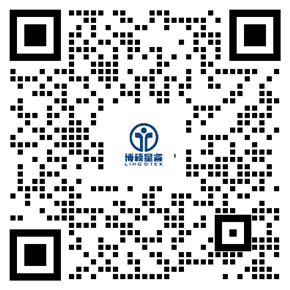技术科普 | DeepL、GPT-4 助力问卷翻译自动化
以下文章来源于国际翻译动态 ,作者高竟慧
国际翻译动态

Researchers Combine DeepL and GPT-4 to Automate (Research) Questionnaire Translation


In a July 30, 2024 research paper, Otso Haavisto and Robin Welsch from Aalto University presented a web application designed to simplify the process of adapting questionnaires for different languages and cultures.
2024年7月30日,阿尔托大学的奥托·哈维斯托(Otso Haavisto)和罗宾·威尔施(Robin Welsch)在发表的研究论文中提到一款网络应用程序,该程序旨在简化改编问卷的过程以适应不同语言和文化。
This tool aims to assist researchers conducting cross-cultural studies, enhancing the quality and efficiency of questionnaire adaptation, while promoting equitable research practices.
它可以协助研究人员开展跨文化研究,提高问卷改编的质量和效率,同时促进公平的研究实践。
Haavisto and Welsch highlighted that translating questionnaires is often costly and “resource-intensive,” requiring multiple independent translators and extensive validation processes. According to the authors, this complexity has led to inequalities in research, particularly in non-English-speaking and low-income regions where access to quality questionnaires is limited.
哈维斯托和威尔施重点提到,问卷翻译通常需要多位独立译员和繁冗验证,会花费较多成本和资源。作者认为,这种复杂性带来了研究中的不平等,尤其是在获得高质量问卷机会有限的非英语国家和低收入地区。
In questionnaire translation, maintaining semantic similarity is crucial to ensure that the translated version retains the same meaning as the original. As the authors noted, “semantic similarity is more important than word-by-word match.” According to the authors, cultural nuances and colloquial expressions can further complicate this process, making it difficult to achieve accurate translations.
在问卷翻译中,保持语义相似性至关重要,以此才能确保翻译版本与原始版本具有相同的含义。正如作者所指出的,“语义相似性比逐字匹配更重要”。此外,作者还认为,文化的细微差别和口语化的表达会使这一过程更加复杂,难以实现翻译的准确性。
To address these challenges, they developed a web application that allows users to translate questionnaires, edit translations, backtranslate to the source language for comparisons against the original, and receive evaluations of translation quality generated by a large language model (LLM).
为了应对这些挑战,他们开发了一个网络应用程序,允许用户翻译问卷、编辑译文、回译为源语以便与原文进行比较,并由大型语言模型(LLM)进行翻译质量评估。
The tool integrates DeepL for initial translations and GPT-4 for evaluating and suggesting improvements. The decision to use DeepL was based on its “reliable output and promising results in translating scientific text,” which the authors said was essential for the accuracy of research questionnaires.
该工具集成了DeepL(用于初始翻译)和GPT-4(用于评估和提出改进建议)。作者说,“在翻译科学文本方面,DeepL具有可靠的输出和良好的效果”,这一特点对于研究问卷的准确性极其重要,故应用于此。
“We set out to develop a prototype of a questionnaire translation tool that would exploit the versatility of LLMs in natural language processing tasks to the benefit of researchers conducting cross-cultural studies,” they said.
他们表示:“我们想开发一个问卷翻译工具的原型,它能借助大型语言模型(LLM)在自然语言处理任务上的多功能性,来助力研究人员进行跨文化研究。”
Haavisto and Welsch tested the tool’s effectiveness through two online studies: one involving 10 participants testing the English-German language pair and another involving 20 participants testing the English-Portuguese language pair. Both studies showed “promising results regarding LLM adoption in the questionnaire translation process,” according to the authors.
哈维斯托和威尔施通过两项在线研究测试了该工具的有效性:一项是由10人测试英语-德语互译,另一项是由20人测试英语-葡萄牙语互译。作者称,两项研究都表明:在问卷翻译过程中,采用大型语言模型(LLM)取得的效果不错。
Moderately Helpful
研究助力
The study’s findings indicated that machine translation, when supplemented by GPT-4-generated quality scores, leads to translation quality and semantic similarity comparable to traditional translation. Participants also found the GPT-4-generated suggestions “moderately helpful” and accurate in representing translation quality.
研究表明,如果将GPT-4生成的质量评分作为补充,机器翻译的译文质量和语义相似性可以与传统翻译相媲美。参与者还认为,GPT-4生成的建议“比较有用”,并且能准确反映翻译质量。
Haavisto and Welsch also noted that LLM-generated translation quality evaluations can assist researchers in identifying and addressing context-specific issues in their translations, highlighting that “this is the first step towards more equitable questionnaire-based research, powered by AI.”
哈维斯托和威尔施还指出,由LLM生成的翻译质量评估可以帮助研究人员发现和解决翻译中的特定语境问题,并强调“这是借助人工智能,实现更公平问卷式研究的第一步”。
The tool currently supports translations in English, German, Portuguese, and Finnish — although Finnish remains untested. The code for the prototype is publicly available on GitHub, inviting further exploration and contributions from the community.
该工具目前支持英语、德语、葡萄牙语和芬兰语的翻译,但芬兰语尚未经过测试。该原型代码在GitHub上公开发布,诚邀大家进行积极探索和发表相关文稿。
原文网址:
https://slator.com/researchers-combine-deepl-and-gpt-4-to-automate-research-questionnaire-translation/

群内会定期推送语言服务行业最新动态、活动预告、竞赛通知?等内容~
欢迎你的加入?!


1人评论了“技术科普 | DeepL、GPT-4 助力问卷翻译自动化”
Your method of explaining tthe whole thing
in this paragraph is in fact good,all can simlly know it, Thanks a lot.